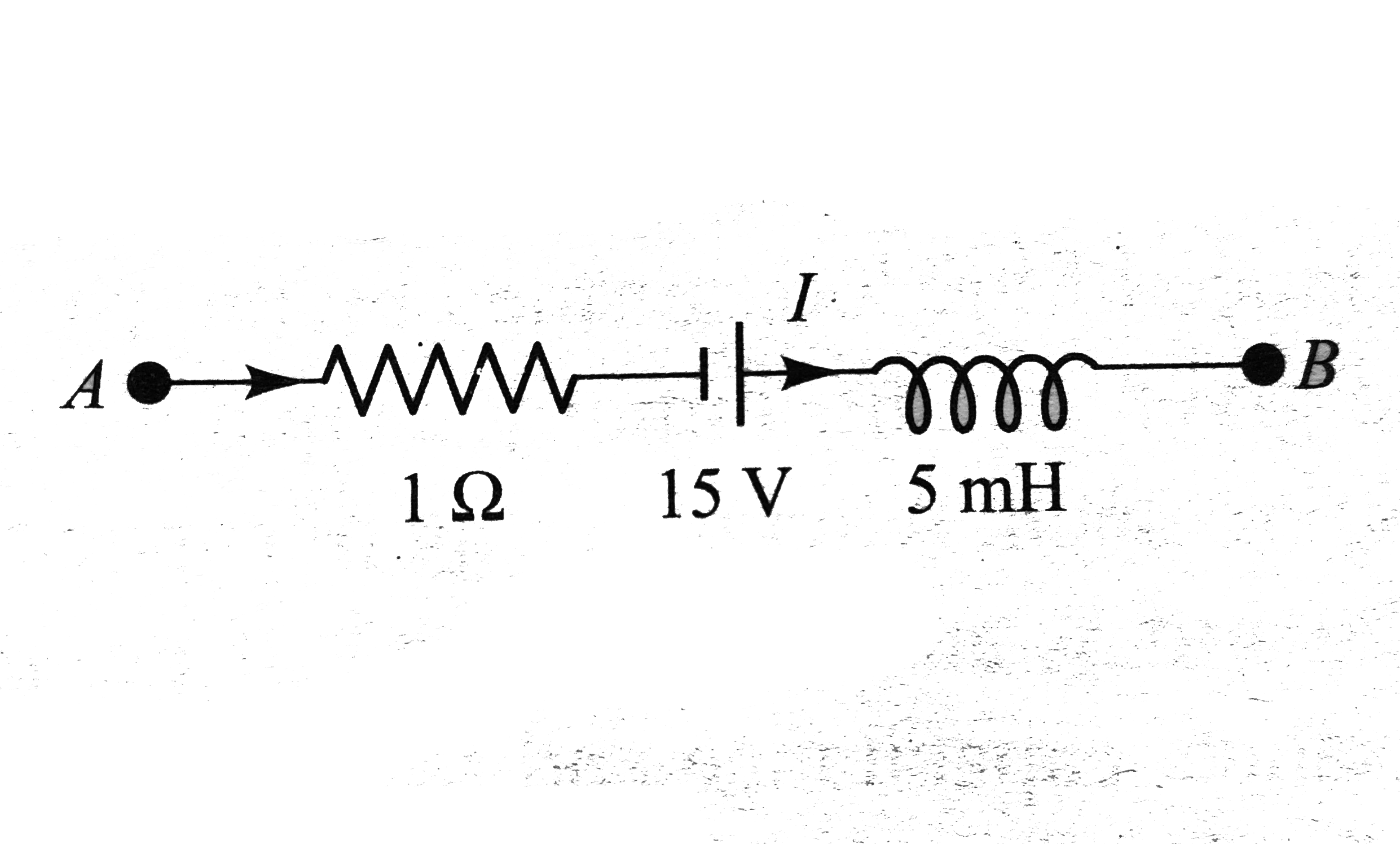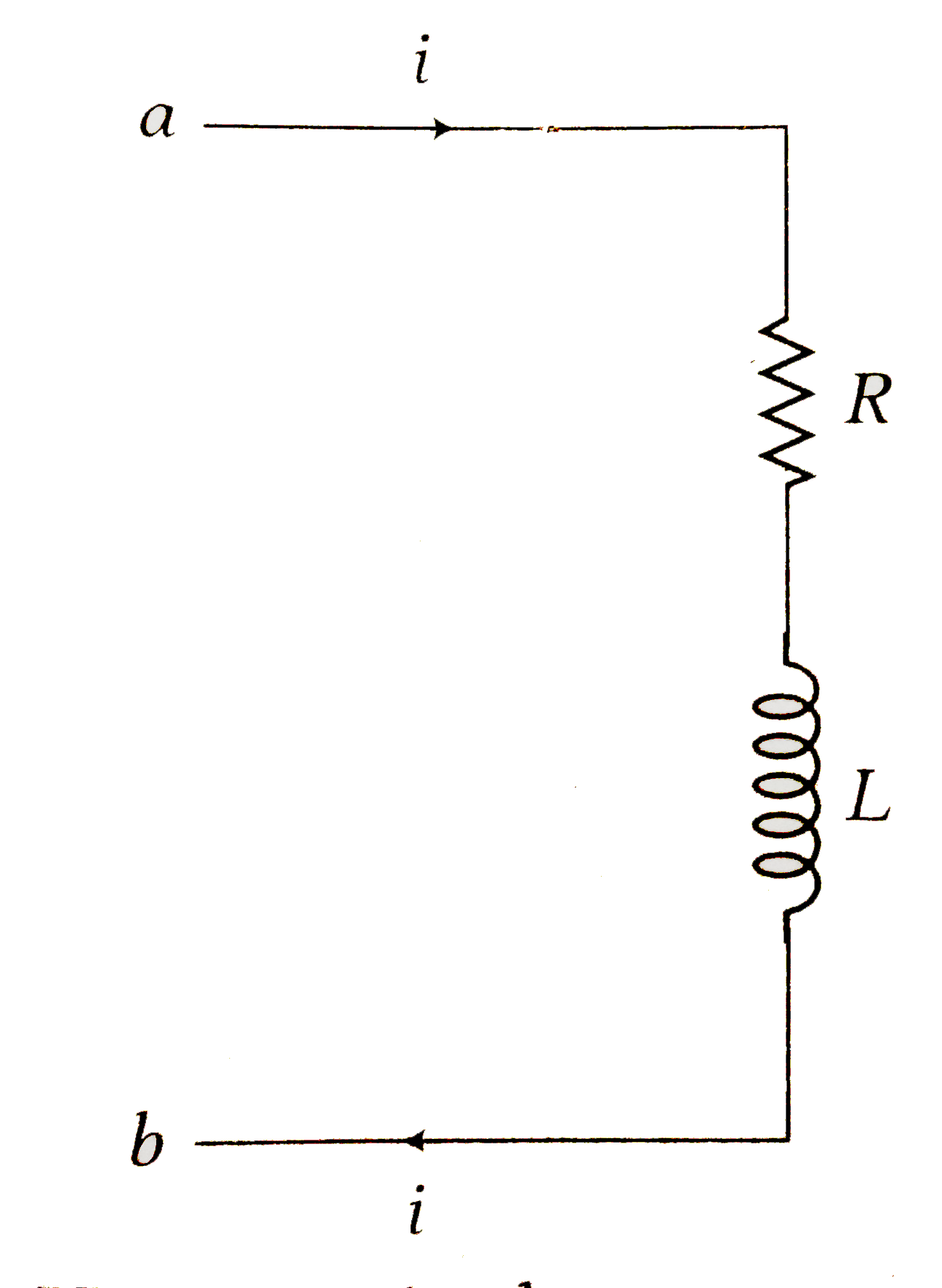AB is a part of circuit. Find the potential difference VA−VB if
a. current I=2A and is constant,
b. current i=2A and is increasing at the rate of 1As−1,
c. current i=2A and is decreasing at the rate of 1As−1,

Ldidt=1didt
writing KVL from A to B
 VA−1didt−5−2i=VB
VA−1didt−5−2i=VB
(i) Put i=2,didt=0
VA−5−4=VB ∴VA−VB=9volt
(ii) Pit i=2,didt=1,VA−1−5−4=VBorVA−VB=10V0
(iii) Put i=2,didt=−1,VA+1−5−2×2=VBorVA=8volt.
Similar Questions
AB is a part of circuit. Find the potential difference VA−VB if
a. current I=2A and is constant,
b. current i=2A and is increasing at the rate of 1As−1,
c. current i=2A and is decreasing at the rate 1As−1,

View SolutionWhat is the potential difference VB−VA when the current i is 5A and is decreasing at a rate of 103A /s
View Solution
Knowledge Check
The network shown in the figure is a part of complete circuit. What is the potential difference VB−VA when the current I is 5A and is decreasing at a rate of 103A/s?
 A5VB10VC15VD20V
A5VB10VC15VD20V
If current is increases with rate of 2Ampsec, then find VA−VBA2VB4VC8VD6VIf I=5A and decreasing at a rate of 102(A/sec) , then VB−VA
 A5VB10VC15VD20V
A5VB10VC15VD20V
In the given circuit, current I is 2A and it is decreasing at the rate of 103AS−1.Then VB−VA is
_PHY_E06_148_Q01.png)
View SolutionIn the circuit (Fig.) what is potential difference VB−VA (in V) when current I is 5A and is decreasing at the rate of 103As−1

View SolutionThe network shown in Fig. is a part of a complete circuit.What is the potential difference VB−VA when the current I is 5A and is decreasing at a rate of 102(A/s) ?

View SolutionThe network shows in Fig is part of a complate circuit. If at a certain instant the current (I) is 5A, and is decreasing at a rate of 105As−1 then VB−VA=−V.

View SolutionWhen the current in the portion of the circuit shown in the figure is 2 A and increasing at the rate of 1As−1, then the measured potential difference Vab=8V.
However, when the current is 2 A and decreasing at the rate of 1As−1, then the measured potential difference Vab=4V.
The values of R and L are

View Solution